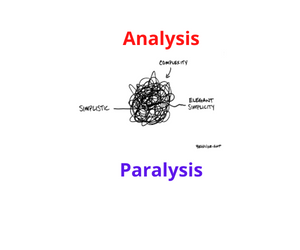Mistakes. We all make mistakes. Some are innocent, some are fatal and some are “near misses”. And guess what, even the great Goldman Sachs has its share of mistakes too. One, to the tune of $1B, nearly blew up a major IPO deal. Some quick thinking managed to snatch victory from the jaws of defeat, but when you come that close, there is, and ought to be, a drains-up exercise. An unkind wag would call this a euphemism for a witch hunt but would be wrong. It’s all about learning.
Let me take you back to a time long ago when Portugal had its own currency, the Escudo, and there was no impending state crisis of the PIGS variety we face today in 2012. Portugal was doing what the capitalist church preaches and privatising state-owned companies. In play was Portugal Telecom. Goldman Sachs was doing one of the many things it does well, and even if it was not yet aware it was doing god’s work, was leading the IPO for this $1B plus offering. No window dressing of Greek finances here, a good, honest simple IPO. Simple, because all Goldman needed to do was pay for the shares, and then pass them on to other brokers, collect their IPO fee and make the usual couple of notches on the bedpost of international deal-making.
There is one bit of plumbing that does have to work though; Goldman had to front the money to pay for the shares, even though it would collect it all back later. Like any other bank, Goldman did not have a $1B worth of Escudos in cash lying around. Standard procedure is to simply sell dollars and buy those Escudos in the foreign exchange (FX) market. Since more or less the same amount of Escudos would come in from selling the shares on to others, an FX swap was needed. That means doing one thing on one day and the reverse on another day in the future. There will be a difference in price on the two sides of the trade, which is the profit for the person doing the trade with you. Happens by the billions, literally, in the foreign exchange markets every day. So, somebody in the deal team has arranged this transaction, so that Goldman will have the requisite fistful of Escudos in the Goldman Escudo account in Portugal in order to pay for the shares. Normally, that will be an account with a local bank. The provider is always referred to as the Nostro, from the Latin for our.
On the appointed day, Goldman gets a message from the Nostro, not in Portuguese, but unmistakable English. No money. Something has gone very wrong; with something like 90 minutes to make the payment, there is no time to work out exactly what went wrong or why. Goldman has to command the FX desk to sell dollars and buy escudos for cash, which means the same day. Now, same day trades are part of normal business, but having to ask your local provider for over $1B worth of local currency is not. They are also taking a big chance on your credit, as they will not get the $1B back until later that day. This is like turning up to class with a big pointy cap with the word “Dunce” on it. Fortunately for Goldman, the FX market is not a public place, rather it takes place over phones and electronically. Nonetheless, there is no subtle way to deal with this to stop the price going up. In a situation like this, they see you coming and you just get to bend over.
Disaster has been averted, and the franchise is intact, but Goldman has had a very bad day. The deal-making kind of investment bankers tend to be quite aloof and generally demanding. So understandably, they wanted to know how this could happen. That demand landed firmly in the lap of the partner in charge of Operations, Larry Linden. The McKinsey training came straight to the fore. “Breeding will out”. No doubt under no little pressure from his fellow partners, Larry looked into this one personally, following the thread back all the way to the darkest corners of Operations. This is where the plumbers live, the folk who make the whole place function every day, ensuring that where a trader has shouted “Buy”, or “Sell” into a phone or in a trading pit, that this is indeed what happens. Well, right down in that darkest corner is the guy who does the final control of the FX positions ensuring that they make sense. I forget what the analyst’s name was, so let’s call him John. Larry asks John to show him how he does this final control. John pulls out a thick wodge of tractor-feed paper. For those of the younger generation, this is an old paper format, the stuff with holes down the sides and alternating shaded and white lines on it. “This is the FX positions report,all the positions for each trading book” John announces.
The report is nearly as thick as the Sunday edition of the New York Times. On each page, there are perhaps 12 lines of numbers, with these trading accounts, the currency and a number. “What do you do with it?” asks the partner. John pulls out his ruler, inserts it into the report and starts to flick through the pages. After a few flicks, he stops. “See, I am looking for ones like that one, the one with brackets around it”. “What does that mean?”. “That means something is wrong with the position because the trading book should not have a minus for the next day”. John continues flicking through the report, marking items with a highlighter and then the pages with yellow stickies, both of these the staple stationery of Operations folks. “How many of these problem positions do you expect to find on a normal day?” asks the partner. “About a dozen,” replies John quickly, on top of his game and eager to impress the partner, somebody he would not normally speak to and might just see in a big town hall meeting. Larry, looks at him, almost in shock: “How many pages does that report have?” “120 to 150” There are about 12 entries per page, that’s 1’440 lines on a slow day and of those about 12 are of interest.
“That’s like looking for a needle in a haystack!” quips Larry. Normally, my job with these incident cases was to look at what happened, figure out the lessons to learn and share them globally. Part of that was done, so I left to do a little more research and spread the word globally. We looked a little more at that report; a long-time Goldman person, of which there were many, helped us with the institutional memory and explained that the report had its origins in the earliest days of the FX desk when there were a couple of traders and positions. It was a good enough tool for the job at the time, but obviously needed a version 2.0. What we also determined is that we could divide up the world of operational reports into two discrete groups. Control Reports, the kind we needed to check that the right things had happened and Reference Reports, the kind we needed to look things up but might not necessarily use. This is the kind of observation that gets the McKinsey-trained mind positively salivating; they live for the moment when they can make a neat order of things. MECE they call it, mutually exclusive and collectively exhaustive. So something is either black or white and there are only two colours. This is actually a really useful tool, so I was straight onto plus points with the partner.
The extra vital observation, from the school of common sense, is that you can’t seriously use a really long report as a control. It just stands to reason that you might miss something. Be careful what you wish for! With those two observations made, there was an obvious next step. Audit every report used by every Operations department anywhere on the planet. Make the users decide whether they were Control or Reference and if they were control and were more than 25 pages long, scrutinise them and see if there was a good reason for such length. That was a mission and a half, especially as by then Goldman had both old mainframe applications, which were easy to audit and many Unix ones that were far harder to get your hands around. Turns out a lot of old reports weren’t needed anymore too. This was a painful mission, but one that had lasting benefits: all Operations managers had a better sense of the controls in their area, had reports that helped them focus on issues and those doing the job had a better chance of doing it properly.
Lessons Learned: the people that work for you need good tools. You have to give them a chance to do the job well. Dividing those tools up into Control and Reference is a good start. Anything for Reference can be stored electronically. Anything for Control that is more than 25 pages long most likely has too much noise in there. Lastly, those Controls need an overhaul periodically. In today’s fast times, I would be “asking the question” no less than once per year.
Epilogue: Goldman Sachs alumni have a long, and proud history of service and giving back. Many have ended up in high-profile public roles, others have devoted themselves to more private, but no less worthy causes. Larry Linden must have been bugged by all those paper reports we used to produce because he has gone on to devote much of his time and some of his wealth to conservation. See: http://www.lindentrust.org/
Share on:




I can assure you that FX Reconciliations was just as daunting a job for UBS in the earlier part of last decade, albeit in SQL instead of paper reports.
Come to think of it, we had to sign off paper backup reports too (so much for the paperless office)…